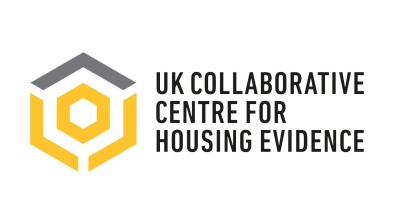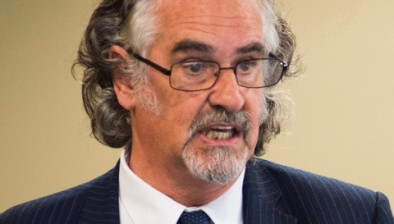Ken Gibb: Prevention innovation in Victoria, Australia may have lessons for UK housing

Prof Ken Gibb from the UK Collaborative Centre for Housing (CaCHE) explores the potential of early intervention budgeting to positively influence public policy, using Australia’s innovative Early Intervention Investment Framework (EIIF) as a case study to demonstrate how prevention-focused investment can achieve better outcomes, generate savings, and inspire global adoption.
There is longstanding interest in making a stronger economic case for investment in social housing. Such a cost benefit analysis approach can be linked to the preventative case for investment to achieve better health, education, homelessness and wider economic and social outcomes for those affected while amassing savings in the form of the avoided costs of reduced demand for acute (symptomatic) services.
Many, including the UK and Scottish governments, intuitively accept the prevention argument regarding public service reform, that by addressing the upstream causes of problems that manifest as acute spending needs, we can improve outcomes and reduce spend on those acute services (for example, the Christie Commission). However, meaningful prevention to scale has proven elusive. This is arguably because of the lack of incentives to be preventative and the rational silos that departments and agencies find themselves in. Why commit to preventative actions that cut your budget, or where you cannot realise or hold on to the savings made by succeeding? How can you shift spending away from urgent acute priorities?
The switch to preventative public policy is also constrained because, currently, much of the acute and preventative spending is in resource expenditure, not capital spend, where the former is now more tightly controlled by HM Treasury in what is a tight fiscal environment (Steven Aldridge made this important point to me recently: the nature of the spend (capital or revenue/resource) matters because they are looked on differently by HMT in terms of expenditure control). We note, however, that a preventative case for social housing investment based on improved outcomes across many budgets would be (or could be) largely capital-funded.
While certain specific cases achieving a shift to prevention and generating cashable savings recycled into further prevention has been observed in both dental health care and early years education in the UK, this may be because the governance models in each case makes it more possible to internalise the externalities and be more innovative within single budgetary departments. It may also be easier in the future, where outcome improvements can be allied to capital investment. Even so, the specific cases are not the general rule, and it is widely concluded that one needs to fundamentally change how government fits together in order to make progress (Puttick, 2212).
It is against this background that we should examine important innovations going on in Australia. The State of Victoria has established a preventative annual budget setting process that generates cashable savings over time and is organised around evaluating the preventative outcome associated with proposed spending programmes. This is based on a coherent evidence and modelling approach to proposed outcomes from prevention investment and a systematic effort to assign where the avoided costs of acute services fall, returning 50% of savings to assigned departments immediately and also booking the remaining 50% into future budgets for up to a 10-year period after a specific programme is approved. This is known as the Early Intervention Investment Framework (IIEF) and is how the Victoria Department of Treasury and Budget organises future claims on its budget.
This is now the default way that budgeting in Victoria is organised. A critical assumption is that the underlying budget appraisal mechanisms, causal pathways and assumptions regarding outcomes and impacts, cost and benefit evidence are consistently credible, internally and externally. This begs several questions: e.g. who appraises the appraisers in the budgeting process; what does internal evaluation and monitoring of this new approach look like?
The Victoria model was presented at an OECD Wellbeing Forum in Rome in November 2024. The presentation commented on what they think is required to make their EIIF model work in other jurisdictions.
- They stress the need to promote and sustain a culture shift among leaders and investment teams across government. Is this sufficient to force preventative actions to become the norm? The answer to that is probably yes, given the incentives now built into the budgetary system as a whole. But it would be good to see evidence of this.
- They champion a focus on a rigorous and consistent evidence approach to outcomes and identification/measurement of avoided costs. This is positive but almost certainly requires investment in data and data management in order to fill gaps given the additional analytical demands made of statistics and modelling (e.g. around impacts and outcomes of specific preventative programmes) in a preventative system.
- They embrace a credible, shared, and consistent economic and data analysis framework for all this work across the government. It will be fascinating to see how well this operates over time and also how resilient it is to changing fiscal climates and other shocks to government (e.g. requiring new symptomatic or acute service responses).
- They promote a long-term investment framework that embeds and promotes further rounds of early intervention prevention, moving towards a governance model where early intervention is endemic and intrinsic, not peripheral. As argued above – this may be enhanced in a UK context where the preventative spend is treated as capital investment rather than resource or revenue spend.
There is a cornucopia of further papers and background work on the early intervention budgeting system on the Victoria website. It will be fascinating to see how the centrality of evidence, focus on outcomes and the budgetary process evolve and whether they demonstrate sustained success. It is exciting to see such a model properly rolled out. The world should be watching.
This article was originally published on the CaCHE website.








